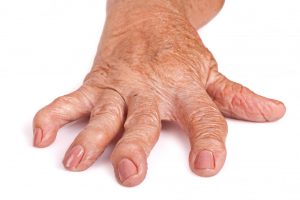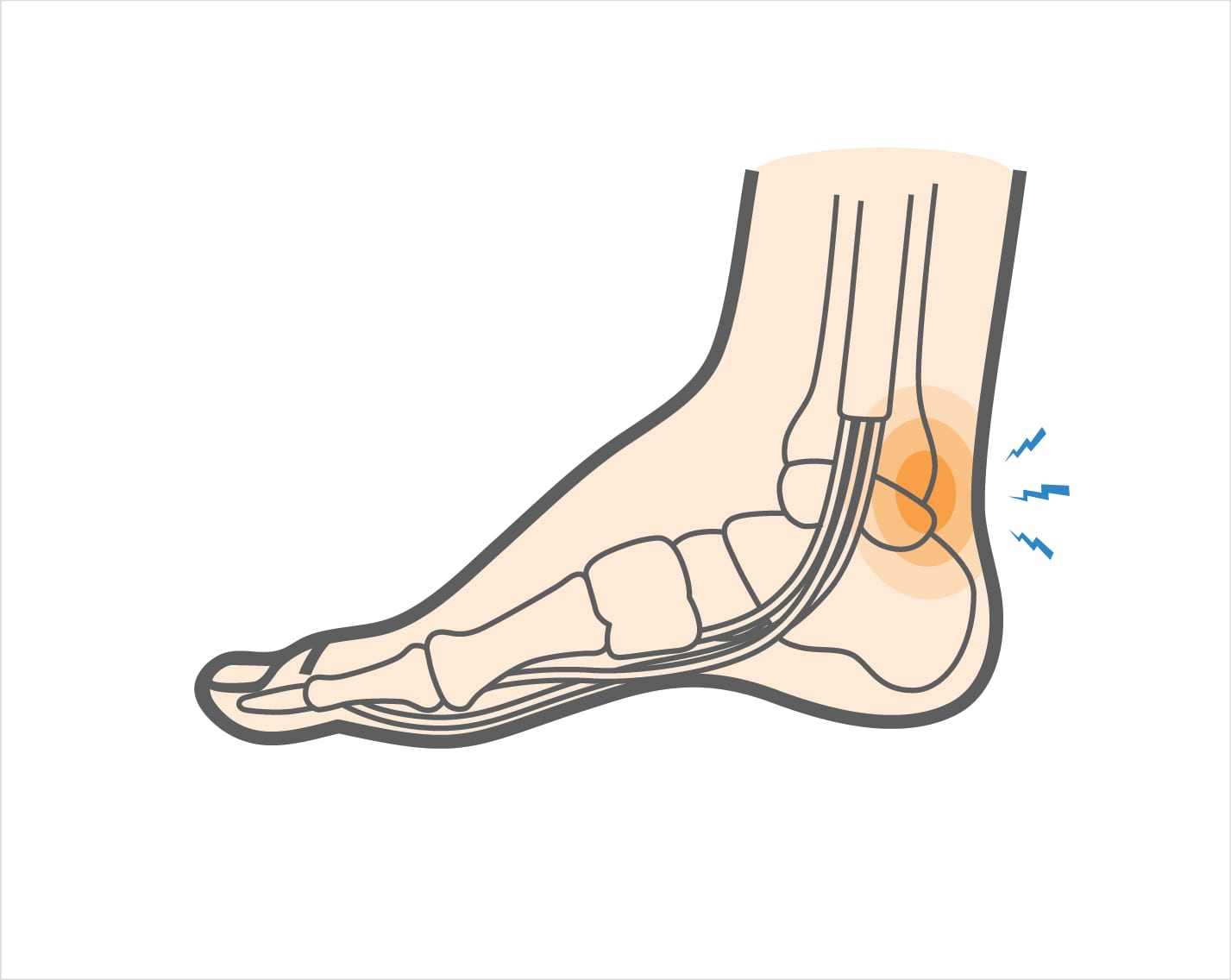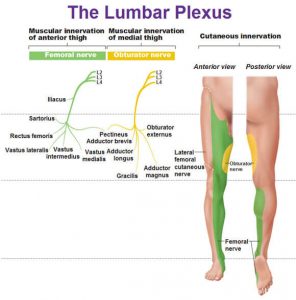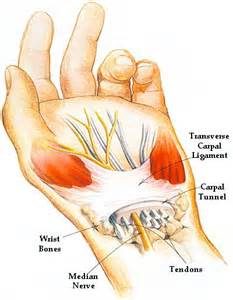 Carpal tunnel syndrome is a condition that causes numbness, tingling and weakness in the hand and arm. The condition is caused by compression of the median nerve within the carpal tunnel, a narrow passageway on the palm side of your wrist. The median nerve runs from your neck down along the arm and through the carpal tunnel to your hand. It provides sensation to the palm side of your thumb and fingers, except the little finger. It also provides nerve signals to move the muscles around the base of your thumb . Anything that squeezes or irritates the median nerve in the carpal tunnel space may lead to this condition. The anatomy of your wrist, health problems and possibly repetitive hand motions may also contribute. A wrist fracture can narrow the carpal tunnel and irritate the nerve, as can the swelling and inflammation resulting from rheumatoid arthritis.
Carpal tunnel syndrome is a condition that causes numbness, tingling and weakness in the hand and arm. The condition is caused by compression of the median nerve within the carpal tunnel, a narrow passageway on the palm side of your wrist. The median nerve runs from your neck down along the arm and through the carpal tunnel to your hand. It provides sensation to the palm side of your thumb and fingers, except the little finger. It also provides nerve signals to move the muscles around the base of your thumb . Anything that squeezes or irritates the median nerve in the carpal tunnel space may lead to this condition. The anatomy of your wrist, health problems and possibly repetitive hand motions may also contribute. A wrist fracture can narrow the carpal tunnel and irritate the nerve, as can the swelling and inflammation resulting from rheumatoid arthritis.
Proper treatment usually relieves the tingling and numbness and restores wrist and hand function. It is worth noting that carpal tunnel syndrome is often misdiagnosed and the main site of median nerve compression can be occurring up at neck and shoulder level. Often by freeing up neck and shoulders muscles and surrounding joints with physio as well as working out muscles down along the arm through which the median nerve penetrates, and loosening and stretching the wrist structures, much relief, often total relief can often be achieved.
Symptoms
Syndrome symptoms usually start gradually.
Numbness: The first symptoms are usually tingling or numbness usually in the thumb, index and middle or ring fingers, but not your little finger. The sensation may travel from your wrist up your arm. These symptoms often occur while holding a steering wheel, phone or newspaper. The sensation may wake you from your sleep.
Weakness: You may experience weakness in your hand and a tendency to drop objects. This may be due to the numbness in your hand or weakness of the thumb’s pinching muscles, which are also controlled by the median nerve.
Carpal Tunnel Risk factors
A number of risk factors have been associated with carpal tunnel syndrome. Although they may not directly be the cause , they may increase your chances of developing or aggravating median nerve damage.
These include:
Anatomic factors: wrist fracture, dislocation, or arthritis that deforms the small bones in the wrist, can alter the space within the carpal tunnel and put pressure on the median nerve.
Sex: It is generally more common in women. This may be because the carpal tunnel area is relatively smaller in women than in men.
Nerve-damaging conditions: Some chronic illnesses, such as diabetes, increase your risk of nerve damage.
Inflammatory conditions: Illnesses that are characterized by inflammation, such as rheumatoid arthritis, can affect the lining around the tendons in your wrist and put pressure on your median nerve.
Obesity : Being obese is a significant risk factor for carpal tunnel syndrome.
Alterations in the balance of body fluids. Fluid retention may increase the pressure within your carpal tunnel, irritating the median nerve. This is common during pregnancy and menopause. Carpal tunnel syndrome associated with pregnancy generally resolves on its own after pregnancy.
Carpal Tunnel Diagnosis
History of symptoms, Physical examination. Nerve tension tests.
X-ray. Some doctors recommend an X-ray of the affected wrist to exclude other causes of wrist pain, such as arthritis or a fracture.
Electromyogram. This test measures the tiny electrical discharges produced in muscles. During this test, your doctor inserts a thin-needle electrode into specific muscles to evaluate the electrical activity when muscles contract and rest. This test can identify muscle damage and also may rule out other conditions.
Nerve conduction study. In a variation of electromyography, two electrodes are taped to your skin. A small shock is passed through the median nerve to see if electrical impulses are slowed in the carpal tunnel. This test may be used to diagnose your condition and rule out other conditions.
Treatment
If the condition is diagnosed early, nonsurgical methods may help improve carpal tunnel syndrome. Physical therapy by a practitioner experienced in this area can be very effective. This would most like involve deep tissue work, osteopathic manipulations, electroacupuncture and postural correction exercises, and nerve glide exercises as the condition improves. Other treatment options include wrist splinting, taking more frequent breaks to rest your hands, avoiding activities that worsen symptoms, medications(Nonsteroidal anti-inflammatory drugs) icing, rest etc. Surgery is also an option but is a last resort.
For treatment of this condition contact us on 0867700191
For more information see this video
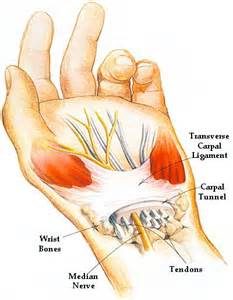
 Carpal tunnel syndrome is a condition that causes numbness, tingling and weakness in the hand and arm. The condition is caused by compression of the median nerve within the carpal tunnel, a narrow passageway on the palm side of your wrist. The median nerve runs from your neck down along the arm and through the carpal tunnel to your hand. It provides sensation to the palm side of your thumb and fingers, except the little finger. It also provides nerve signals to move the muscles around the base of your thumb . Anything that squeezes or irritates the median nerve in the carpal tunnel space may lead to this condition. The anatomy of your wrist, health problems and possibly repetitive hand motions may also contribute. A wrist fracture can narrow the carpal tunnel and irritate the nerve, as can the swelling and inflammation resulting from rheumatoid arthritis.
Carpal tunnel syndrome is a condition that causes numbness, tingling and weakness in the hand and arm. The condition is caused by compression of the median nerve within the carpal tunnel, a narrow passageway on the palm side of your wrist. The median nerve runs from your neck down along the arm and through the carpal tunnel to your hand. It provides sensation to the palm side of your thumb and fingers, except the little finger. It also provides nerve signals to move the muscles around the base of your thumb . Anything that squeezes or irritates the median nerve in the carpal tunnel space may lead to this condition. The anatomy of your wrist, health problems and possibly repetitive hand motions may also contribute. A wrist fracture can narrow the carpal tunnel and irritate the nerve, as can the swelling and inflammation resulting from rheumatoid arthritis.